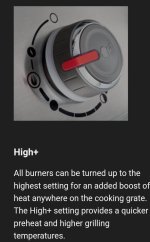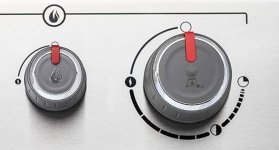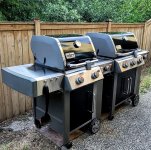Jim C in Denver
TVWBB Wizard
Dan -- great data and synchs with my experience.
Its was a BTU step down going from the Silver B (smaller grate; three sidewinder burners) to the bigger grate mid 2010 Genesis with regular n/s burners.
But then a step up for the 330 (big grate, four n/s burners including the sear). I think the 330 is a great combination of size and power. More so if you use a flat top on the sear side.
What is the math on the Gen IIs (late 2010s) with just three n/s? The grate size on those are a little smaller than the late model Gen 1s. My sense is that those grills could use the sear burner too. The Gen 2s they current sell at Costco have the sear burner -- very nice grill imo.
Its was a BTU step down going from the Silver B (smaller grate; three sidewinder burners) to the bigger grate mid 2010 Genesis with regular n/s burners.
But then a step up for the 330 (big grate, four n/s burners including the sear). I think the 330 is a great combination of size and power. More so if you use a flat top on the sear side.
What is the math on the Gen IIs (late 2010s) with just three n/s? The grate size on those are a little smaller than the late model Gen 1s. My sense is that those grills could use the sear burner too. The Gen 2s they current sell at Costco have the sear burner -- very nice grill imo.



